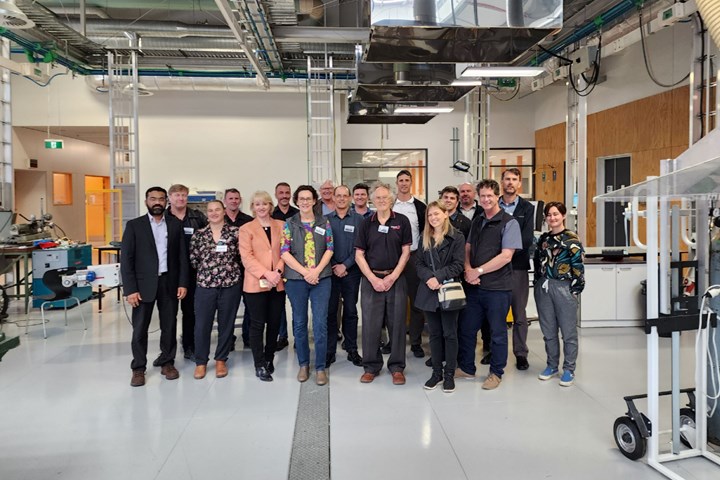Composites Association of New Zealand returns to in-person conferencing
Following the pandemic, CANZ members were brought back together to present new innovations, pose new industry goals and ultimately strengthen bonds within the New Zealand composites community.
This year’s Composites Association of New Zealand (CANZ) conference welcomed all members back in-person. Hosted by the University of Auckland and represented by Leona Reif, president of Composites Australia, and Kerryn Caulfield, CEO of Composites Australia, the annual conference once again brought together the composites community and strengthened business bonds, according to Vineeth Babu, CANZ vice president.
Event organizers hosted Konica Minolta, who demonstrated Markforged (Cambridge, Mass., U.S.) 3D printing technology, capable of reinforcing parts with continuous fibers. Technical and research experience offered by the University of Auckland’s Centre for Advanced Composite Materials (CACM) team was presented by Dr. Tom Allan, with a focus on how to manufacture fiber-reinforced thermoplastics using traditional thermoset composites manufacturing techniques. Dr. Samuel Keer from the CANZ flagship project, “Styrene Exposure Monitoring,” also joined the conference with findings and mitigations aimed to improve the working conditions in manufacturing facilities and presented a tailor-made solution for the New Zealand composites industry to minimize styrene exposure during the manufacturing process.
“I am delighted with the progress made by the team and like to appreciate the support offered by all the participating companies,” Babu says, acknowledging the setbacks and delays experienced by the flagship project team. The Massey University team stepped in to overcome those hurdles, bringing the project closer to completion. “This will be the start of our initiatives to make our manufacturing process safer and more sustainable. Dr. Samuel is credited with many leading workplace health research and you all can expect the collaboration to generate more innovative research and upskilling of our manufacturing workplace standards.”
Babu also notes the award-winning MAST Academy training programs, which have incorporated training for the marine and composites industry. “[The] MAST team made us aware of how the new academy will be delivering the training program to upskill the industry,” Babu explains. “The training programs are developed in collaboration with the association, and Chris will have answers for all your future apprenticeship and training queries.”
Ultimately, the in-person conference “re-energized the New Zealand composites industry and opened the gates to develop a sustainable future,” Babu says. During the conference he presented the CANZ annual plan, outlining the future of the organization and its aims to improve the market share of composites manufactured in New Zealand by attracting more investment in sustainable manufacturing, new developments in outer space explorations and supporting the growth of manufacturing support. CANZ also expects to engage in more industry-level research and development (R&D).
















